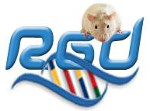Molecular Function Term | Qualifier | Evidence | With | Reference | Notes | Source | Original Reference(s) | amino acid transmembrane transporter activity | enables | IDA | | 8554670; 8554670 | PMID:15632147 | ARUK-UCL | | L-proline transmembrane transporter activity | enables | IDA | | 8554670; 8554670 | PMID:15632147 | ARUK-UCL | | proline:sodium symporter activity | enables | IDA | | 8554670; 8554670 | PMID:15632147 | ARUK-UCL | | | |||||||||||||||||||||||||||||||||||||||||||||||||
|
|


















